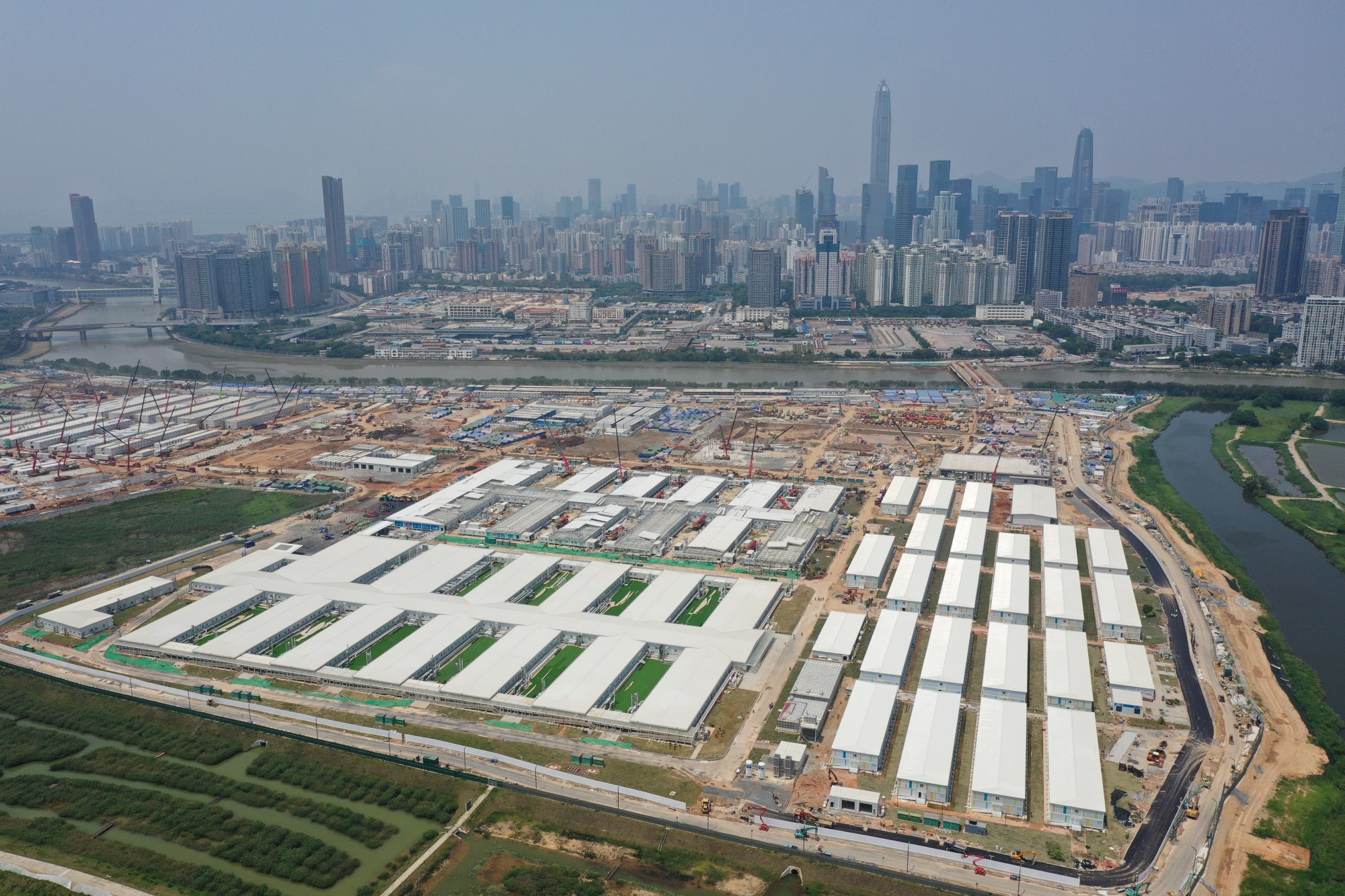
Ukraine war: Trade flows between Shenzhen and Russia thin by nearly a third as freight forwarders bemoan Ukraine uncertainties
- Cargo flow volume between Shenzhen and Russia is an important sign of the overall health of trade between China and its northern neighbour
- As China’s Silicon Valley, Shenzhen’s exports to Russia are heavily focused on technology
Freight shipments from Shenzhen to Russia have shrunk by nearly a third since Moscow began its invasion of Ukraine, according to freight forwarders in the southern tech hub who provide logistics services to the region’s exporters.
Jason Wu, general manager of Shenzhen Xinsheng Freight Forwarding Co, one of the many agencies in the city helping exporters to find planes, railway containers and road trucks to transport goods, said the impact was almost immediate as many Russian clients cancelled or postponed their orders from Shenzhen suppliers.
Wu, who has been in the Russia-bound transport business for 15 years, said that his company’s order volume had dropped 30 per cent since the start of the war in late February.
Another freight forwarder at a Shenzhen-based logistics company, who would only provide his surname, Chen, said that his business had dropped by 20 to 30 per cent for Russia-bound shipments. “There was an obvious drop in interest to buy from China after the war,” he said.
Chen’s company mainly helps cross-border merchants in Shenzhen that sell on e-commerce platforms, including Ozon and AliExpress, to move products to Russia, ranging from daily consumer goods to personal gadgets, via air cargo. AliExpress is affiliated with Alibaba Group Holding, which owns the South China Morning Post.
The reduced cargo volume is reflected in China’s official data. The latest Chinese customs data showed that nationwide, the value of exports to Russia slumped 7.7 per cent in March to US$3.8 billion, the smallest shipments by value since May 2020.
“Following the Russia-Ukraine conflict, China-Europe freight trains are still operating, but it’s getting harder to sort out supplies,” said China Securities analyst Han Jun in a recent research note.
“Shippers and forwarders are reducing or suspending bookings, or shifting to the sea routes between China and Europe that are away from war zones, potentially exacerbating cargo delays and higher freight costs,” said Han.
‘China needs new playbook’ to counter EU’s tougher trade rules
Cargo flow volume between Shenzhen and Russia is an important sign of the overall health of trade between China and its northern neighbour.
Shenzhen is home to big-name exporters, such as telecoms equipment giant Huawei Technologies Co and drone maker DJI, and also the gateway for many small manufacturers in the Pearl River Delta region, the country’s manufacturing and export hub.
As China’s Silicon Valley, Shenzhen’s exports to Russia are heavily focused on technology.
In 2019 and the first half of 2020, almost all products in the top 20 shipment categories were tech gear, from components for microcomputers and mobile network base stations to smartphones and tablets, according to official data from local customs agencies.

Typically, air cargo arrives in Moscow on the same day it leaves Shenzhen’s airport whereas transport times for rail and truck deliveries vary according to the route used. Some head northwest to cross the border through ports in Xinjiang, while others go northeast to Inner Mongolia and Heilongjiang province.
In July 2021, the first railway freight from Shenzhen to Vorsino, a freight hub near Moscow, started operations.
RZD Business Asset, a container operator that is part of Russian Railways’ subsidiary RZD Logistics, said last month that it had launched an overland multimodal service between China and Russia through Kazakhstan, offering container deliveries in 18 days between Shenzhen and St. Petersburg.
Shenzhen smartphone maker AGM’s Russia business at risk due to sanctions
There is one silver lining for China’s freight forward service providers though: European competitors have also had to suspend services for Russia-bound shipments during the Ukraine conflict.
European freight forwarders, including DHL of Germany, Kuehne + Nagel of Switzerland and DSV of Denmark, have suspended freight services to Russia and stopped taking orders following Western-imposed sanctions on Moscow. Danish shipping giant Maersk has also exited the Russian market.
“I hope next month we will see a rapid increase in order volumes because many European forwarders have suspended business with Russia, and their clients may turn to Chinese agents like us as substitutes,” said Xinsheng’s Wu.


